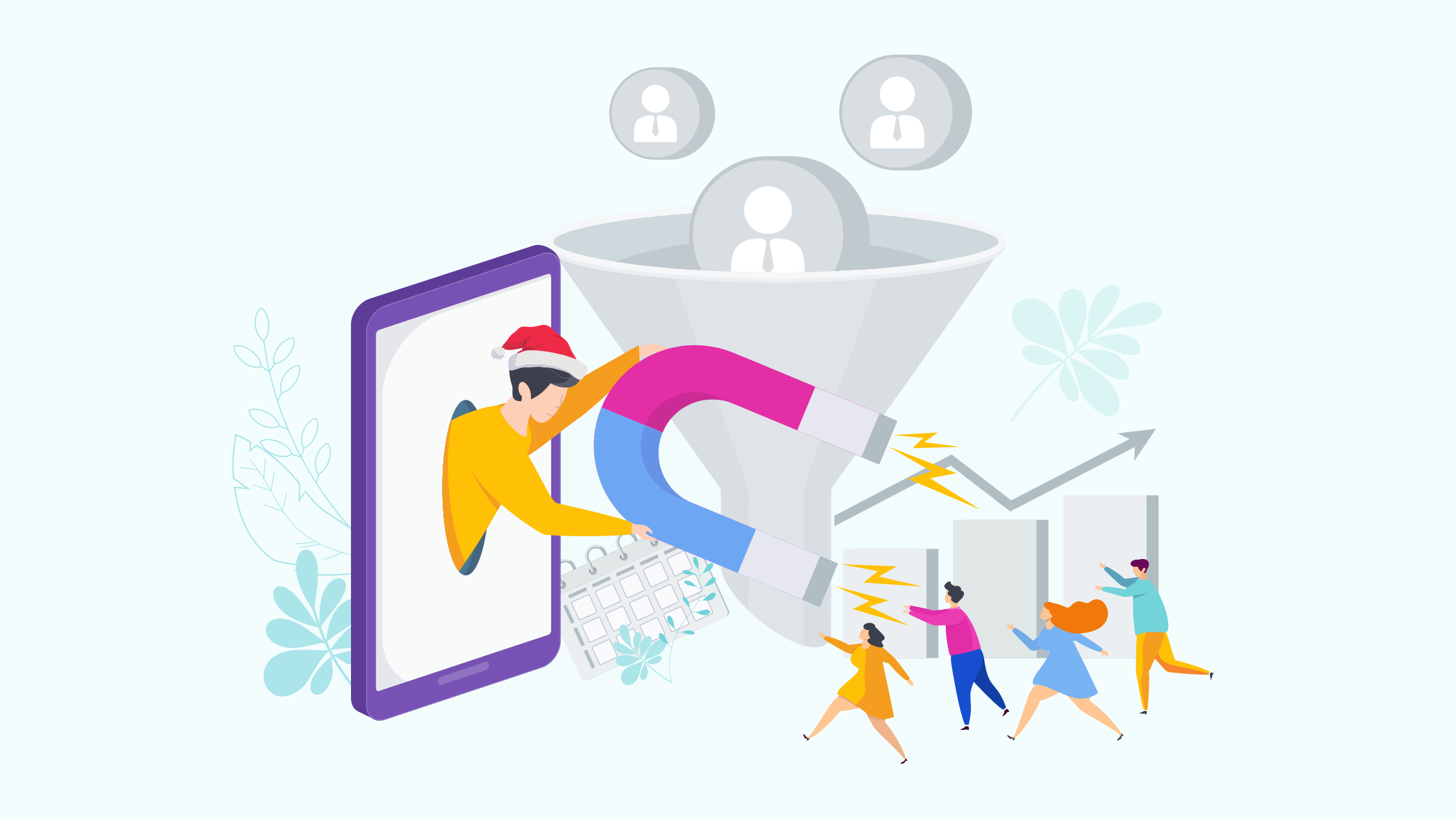Why Ecommerce Brands Must Double-down on CX
Today’s eCommerce landscape has become highly competitive. There are tens and hundreds of brands with the same product and price ranges, leaving customers with a multitude of options.
But how can a brand grow in this scenario? How can a brand differentiate itself from its competitors and cement itself in customers’ minds for a long time to come?
That’s where retention comes into play. Brands must realize that it is expensive (5x) to acquire a new customer and on the other hand, retained customers bring in additional revenue (25%).
Talking about the current landscape, customers themselves are rating customer experience ahead of the price or even the product itself when it comes to shopping with a brand for the second time. And 67% of them cite bad customer experience as their reason to stop shopping with a brand.
Therefore, it is high time that brands started focusing on optimizing their customer experience (CX) especially for the holiday season, when they can anticipate more sales.
But first, there are a set of challenges that your brand might face concerning CX during the Holiday season. Let’s take a look at what they are and how you can face them.
CX Challenges During the Holiday Season
1. Website isn't optimized for conversions and handling high traffic
Website optimization can improve conversions by 70%.
When your website isn’t optimized to handle the high Holiday season traffic, it can lead to frequent crashing, and as a result, frustrated customers
- Cite poor CX to abandon their carts
- Rate the CX received as low and demotivate other prospects from shopping with you.
Either of which ultimately leads to a drop in your Holiday sales revenue.
2. Shipping carriers will struggle to meet delivery promises
Over 15% of the parcels shipped with major carriers including FedEx, UPS, and DHL faced delivery delays during the 2020 Holiday season.
Even with social distancing restrictions being eased and more temporary workers being hired, shipping carriers will find it hard to meet their delivery promises during the Holidays. This leads to your customers’ parcels face delivery issues such as delays.
Carriers themselves are aware of their capabilities YoY. That’s why they are keen to temporarily suspend their money-back guarantee policy during the Holiday season.
3. Your customers will hold you accountable for delivery issues
1-in-3 customers will stop shopping with you after just one bad delivery incident.
When shipping carriers are struggling to meet ends during the Holiday season, your customers’ orders are always prone to face delivery issues in the form of delays and more.
Delivery issues are the #1 reason behind customer frustration, particularly during the Holidays. And to make it worse, customers hold YOU accountable for these more than the shipping carrier — straining your relationship with them.
4. Support teams will be overwhelmed with delivery and returns related issues
Over 40% of the support tickets created are shipping, delivery, and returns related.
Customers who are anticipating their orders frequently bombard your customer support reps with WISMO (Where IS My Order?) inquiries.
Repeatedly resolving shipping and delivery issues consumes all of your support team’s time and prevents them from doing their other tasks such as product-related queries.
You support team members being just reactive to your customers’ delivery issues also reduces your CSAT (Customer Satisfaction) scores.
5. A high volume of order returns
30% of all products ordered online are returned.
With increasing order delivery volume, you can naturally expect the number of order returns to get high as well.
Gaps in your returns management system such as
- An opaque returns policy and
- An exhaustive returns approval process, etc.
Will result in customer dissatisfaction and also hurt your buyer’s confidence when it comes to the purchasing decision.
The verdict is clear. Customer experience is the key differentiator between today’s brands. But how can brands make use of CX as a competitive advantage? How can they optimize their CX across all touchpoints to deliver an outstanding experience particularly during the holiday season?
Here’s how.
How Brands Can Use CX to Differentiate Themselves During the Holiday Season
The modern customer’s journey with your brand is not just a single journey. It is made up of multiple smaller journeys that consist of multiple points of interaction or touchpoints between the two of you.
You need to make an opportunity with all these touchpoints and keep them personalized in order to stay ahead of your competitors and have a memorable holiday season run.
Here are 9 tips on how brands can leverage these touchpoints and improve their CX.
For better understanding, we’ve segregated these touchpoints based on where they take place in your customer’s journey.
Pre-purchase
#1 Personalize your marketing campaigns

By the time you promote your brand on social media, you will have an idea of what products your customers are looking for.
Enable your market research team to get more information about them and send personalized campaigns. If that doesn’t seem to be enough, you can engage them with offers and giveaways to motivate them enough to make that purchase.
Your future customers have made their way into your eCommerce store. The next step involves making them stay in it until they hit that ‘buy’ button. Optimize your website enough to offer them a seamless browsing and checkout experience. You can do just that by:
- Make your website holiday-aligned with designs and highlight special offers to stay relevant.
- Make your site’s loading speed a priority
- Populate your product pages with AR, videos, GIFs, etc to make them engaging and interactive
- Make your checkout process simple, etc
All of this can improve the outlook and usability of your website and motivate shoppers to convert as buyers.
Purchase
The purchase phase is the part of the customer journey when the customers have decided on their purchase and are in the process of making it. However, there can still be detractors at this phase if you miss out on memorable interactions during these touchpoints.
#3 Offer multiple channels for fulfillment
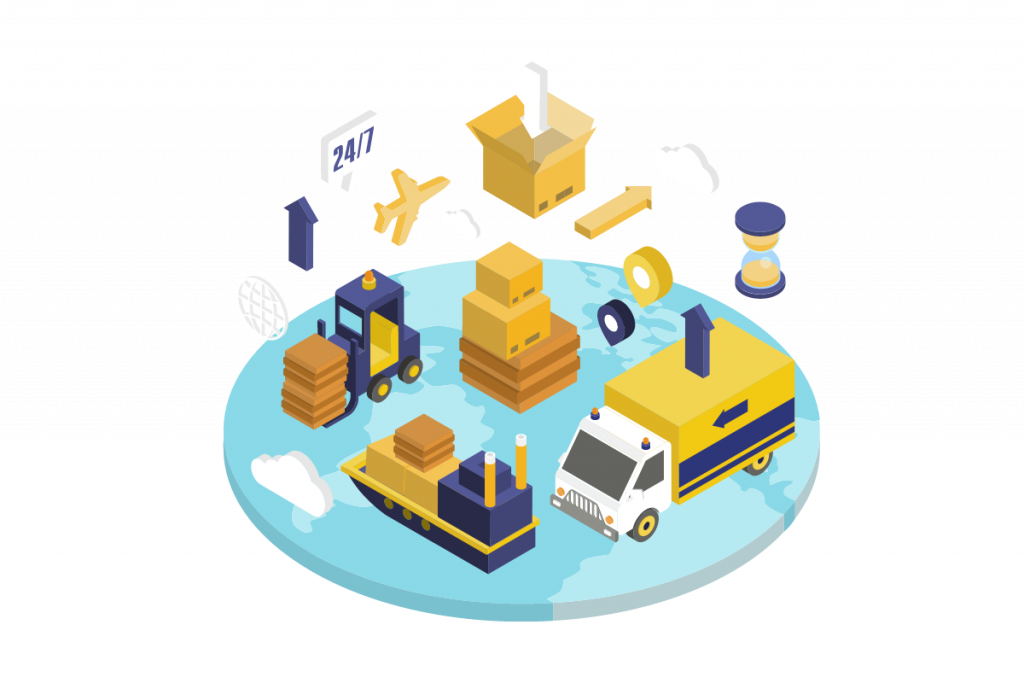
If you’re looking to maximize sales this Holiday season, a multi-channel fulfillment strategy is a way to go. Provide multiple shipping options ranging from same-day delivery, overnight delivery, 2-day delivery, BOPIS, curbside pickup, etc. This enables your customers to choose the option that best suits them instead of putting them in a corner with a lack of choice.
#4 Send out order confirmation notifications
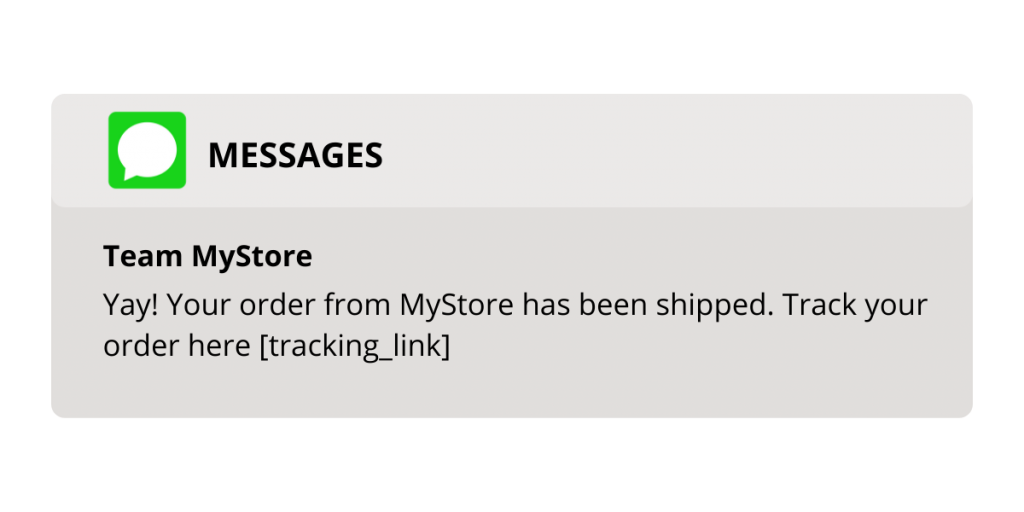
As soon as the order gets shipped out, send out an order shipped notification with a realistic estimated delivery timeline so that they keep their expectations in check and refrain from blaming you in case it gets extended by a day or two.
The order confirmation is the most awaited shipping notification by the customer, as this is the first checkpoint in the race of the order reaching them on time. Therefore, make sure this is sent at the earliest.
Congratulations! They’ve hit that ‘buy’ button and you have earned yourself a customer.
However, hold your celebrations as there are still more to come.
Post-purchase
The post-purchase customer experience constitutes 50% of the overall customer experience.
However, major businesses unwillingly don’t pay attention to their customers after they hit buy as they consider their job done after they’ve handed over their customer’s package to the shipping carrier.
Don’t make the same mistake as them but instead double down on your post-purchase customer experience and stand out from the crowd.
The following steps will help you build trust & reliability to retain hard-earned customers and grow:
#5 Enable your customer support team to proactively resolve customer issues
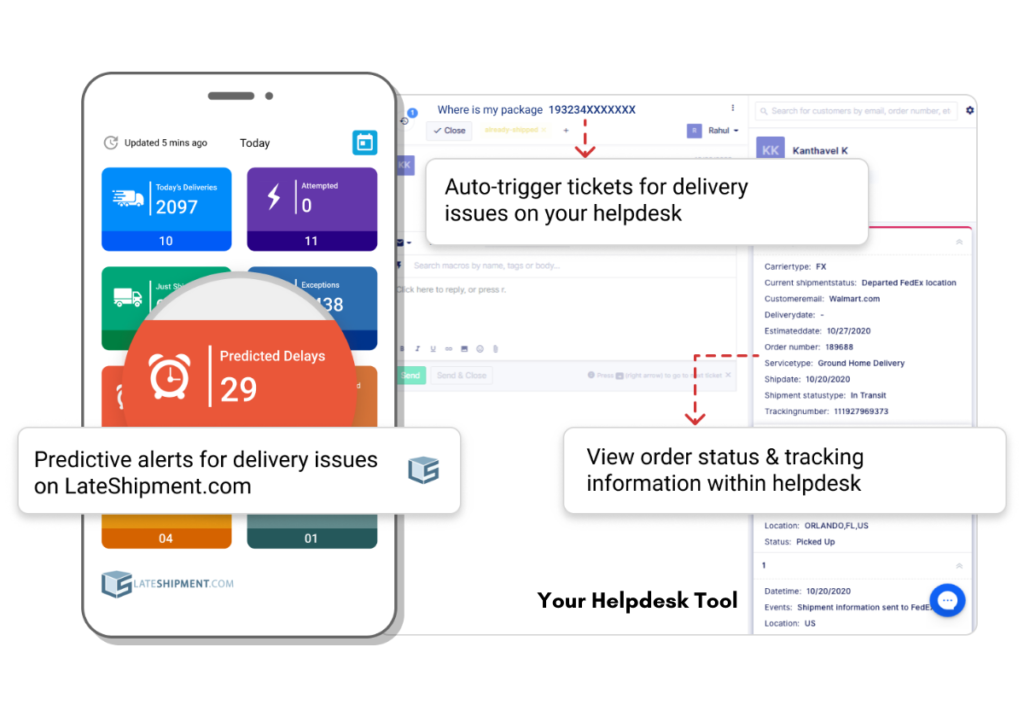
With the help of real-time tracking, you can empower your support reps to stay in the know of your customer’s parcels which are error-prone, and proactively resolve them before they impact your customer. This will forge strong customer relationships and foster brand loyalty.
You can also provide omnichannel support on their website, social media, etc, to avoid the issue being escalated and reduce the number of support tickets being created.
#6 Keep your customers updated on their order status
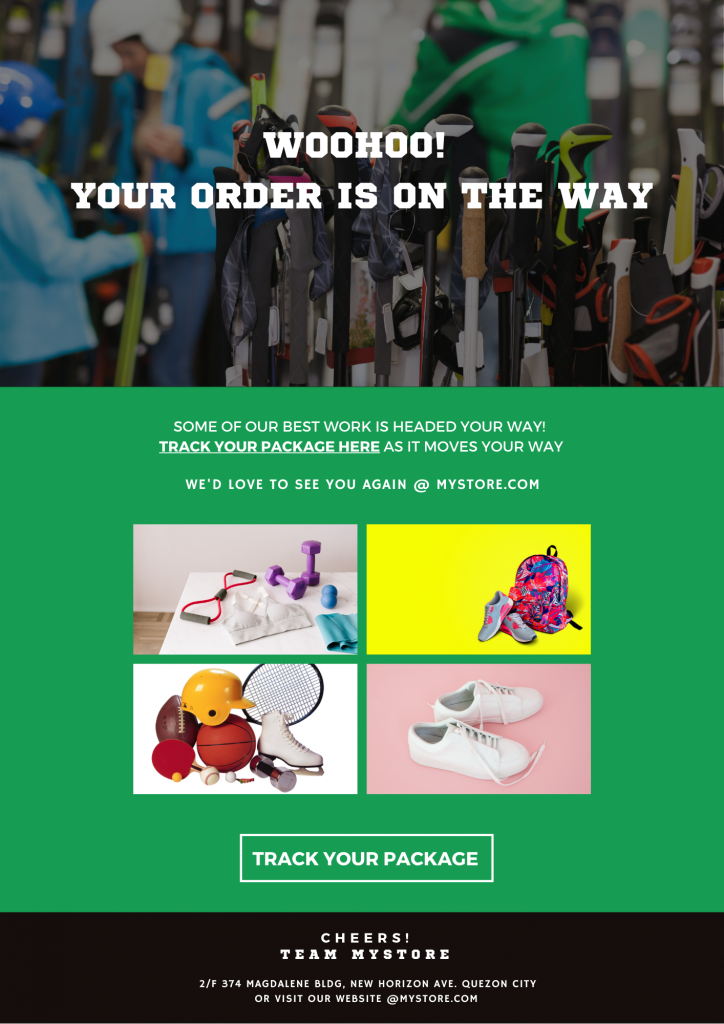
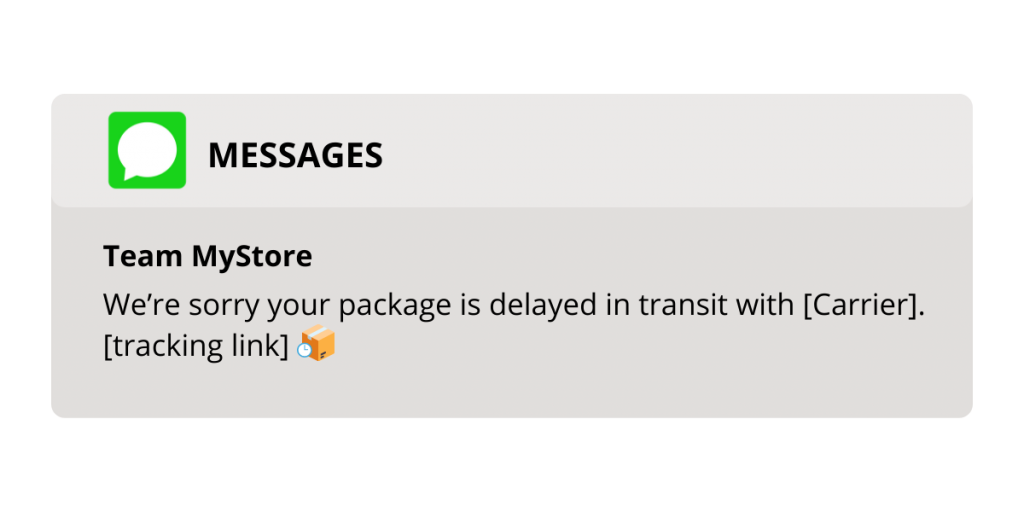
Send post-purchase transactional Emails and SMS notifications to keep your customers in the loop of their orders throughout the delivery lifecycle. This can help in reducing your customers’ anticipations in the most anxious stage of their journey.
- Start with an ‘out-for-delivery’ notification containing a tracking button for the customers to track their orders periodically
- Not just regular transactional notifications, also inform your customers when something goes wrong with their orders such as orders being ‘in-transit with delays’ or ‘suspected lost’, etc.
#7 Delight your customers with brand-consistent order tracking experiences
Providing post-purchase experiences that are on-brand can help you take a step further in your path towards meeting customer expectations and delight them.
Make order tracking an extension of your brand experience by creating your own branded tracking pages that are both beautiful and brand-consistent. You can also consider making order tracking self-serve with an ‘order track’ button on your website or in your notifications.
After delighting your customers with branded tracking experiences, you can also use the opportunity to boost repeat purchases with upsell and cross-sell campaigns during order tracking moments.
#8 Get your customers ’ feedback to improve the delivery experience
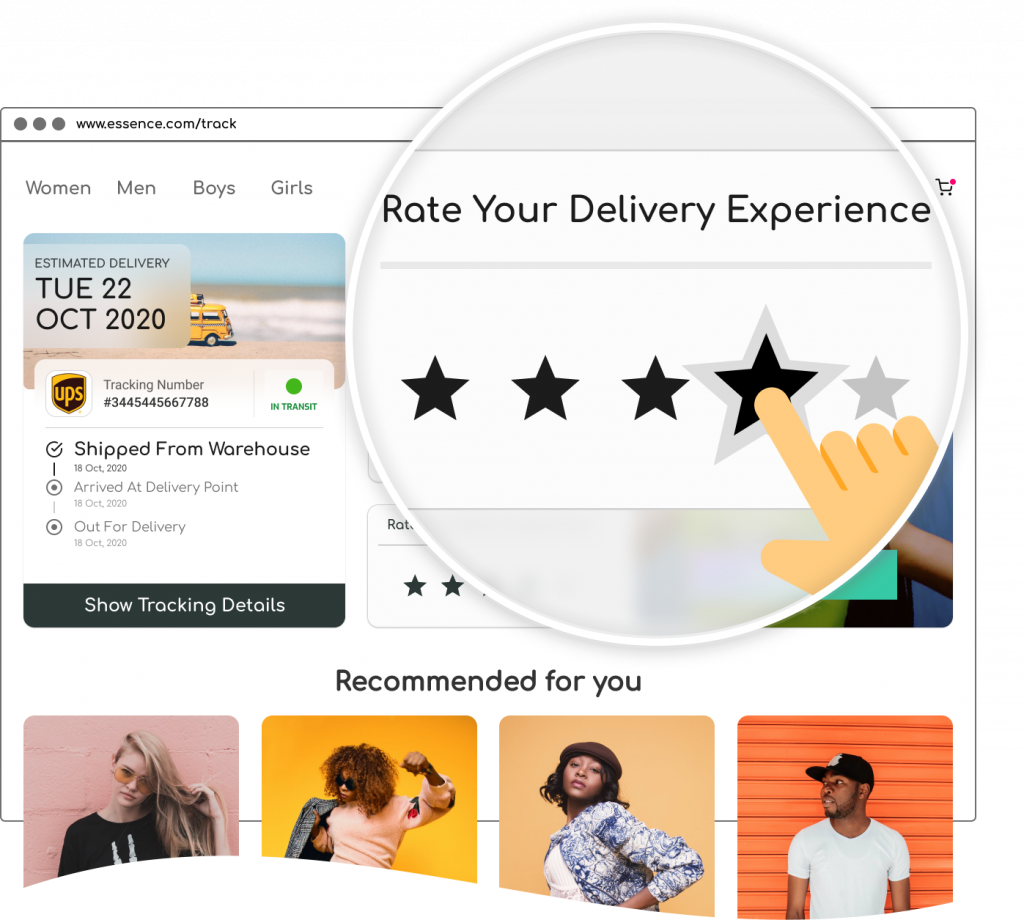
Once your customers receive their orders, you can ask for their feedback on how their delivery experience was.
You can then use this information to make better shipping decisions and optimize your delivery experience as well. This way, your customers will be impressed with your efforts and will prefer you to your competitors.
#9 Make your returns process hassle-free
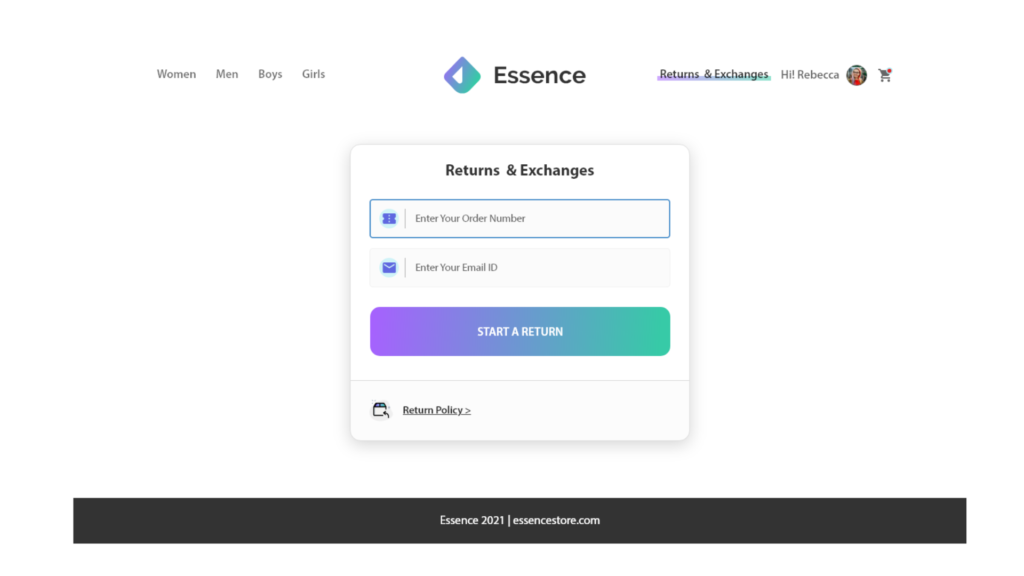
When returns are done right, they can mean a whole lot of repeat sales and long-lasting customer relationships. Here are some important tips to keep in mind for when you make returns an integral part of your post-purchase strategy.
- Have a clear-cut returns policy
- Offer free and flexible returns
- Automate your returns process and make order returns as easy as shopping, etc
All of this can enhance your customers’ returns experience with your brand.
Final Word
Customer experience (CX) is a critical component improve your retention rate particularly during a time like the Holiday season, when it can bring in more sales.
Therefore, it is incumbent upon you to focus on the all the touchpoints of the customer journey and boost retention and lifetime value through memorable experiences this Holiday season.
Improving your CX to boost retention rates are just one part of the Holiday season, which includes a fool-proof strategy across all areas of your business.
Make use of our holiday eCommerce checklist to stay updated with the holiday season trends boost sales.
